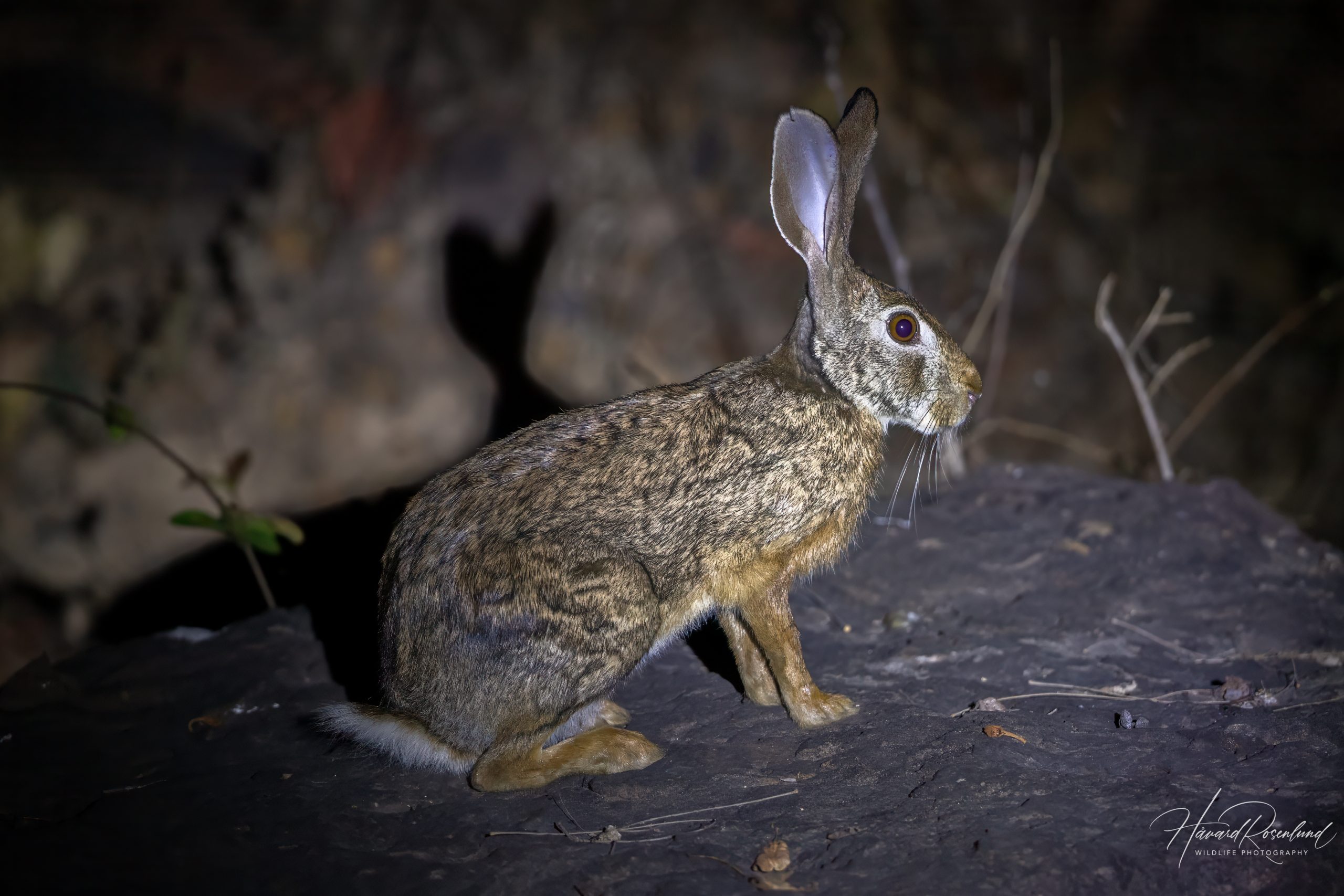Description
The Indian hare (Lepus nigricollis), also known as the black-naped hare, is a species of hare native to the Indian subcontinent. Its range extends across India, Nepal, Bangladesh, Pakistan, and Sri Lanka, as well as the Indonesian island of Java. The Indian hare is medium-sized, with a body length of approximately 40-70 cm (16-27 in) and a weight ranging from 1.5 to 6.0 kg (3-13 lbs). It has a brown coat and a characteristic black nape, which separates it from other species of hare.
Diet & habitat
Indian hares inhabit a variety of environments, including open grasslands, agricultural fields, and scrub forests. They are predominantly herbivorous, feeding on a wide range of vegetation such as grasses, herbs, fruits, and bark. Their feeding habits involve both grazing and browsing, depending on the availability of food resources. These hares are known to forage primarily during the early morning and late evening, avoiding the heat of the day.
Behavior
The Indian hare is generally solitary, though it may be seen in pairs or small groups during the breeding season. It is crepuscular, being most active during dawn and dusk. This hare is known for its swift and erratic running patterns, which it uses to evade predators. When threatened, it relies on its speed and agility, often zigzagging to confuse pursuers. Indian hares are also known for their acute sense of hearing and keen eyesight, which help them detect predators.
Reproduction
Breeding for Indian hares typically occurs throughout the year, with a peak during the monsoon season when food is abundant. Females give birth to 1-3 young after a gestation period of around 40 days. Unlike rabbits, hares are born fully furred and with their eyes open, enabling them to be relatively independent shortly after birth. The mother nurses them for a few days before they start foraging on their own. Indian hares have a relatively short lifespan, with many falling prey to predators within their first year.
Introduced populations
Indian hares have been introduced to several islands in the Indian Ocean, such as Mauritius, Réunion, and the Seychelles. These introductions were often the result of human activities, either accidentally or intentionally for hunting purposes. In their introduced ranges, Indian hares can have significant ecological impacts, including competition with native species for food and habitat, and potential disruption of local ecosystems.
Status
The Indian hare is currently classified as least concern by the IUCN Red List. Although it faces threats from habitat loss and hunting, its wide distribution and adaptability to different habitats help maintain stable population levels.





